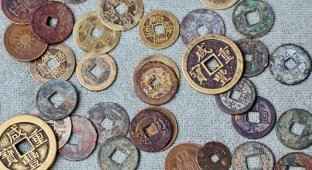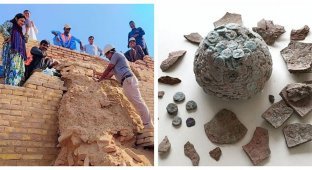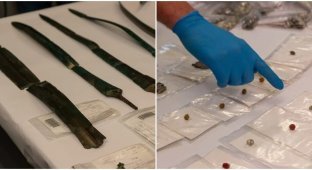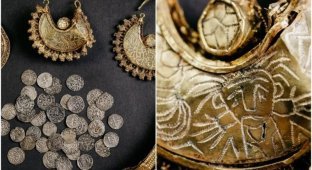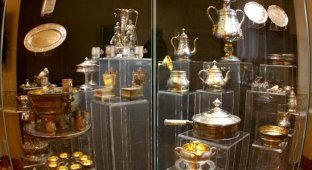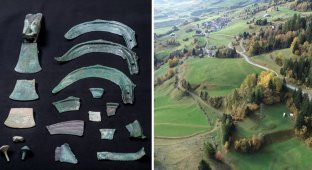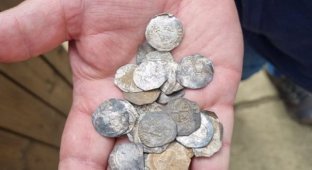10 unusual treasures found in 2023 (11 photos)
From stashes of gold and silver coins to intricately designed jewelry, here are some of the most interesting gem finds made in 2023. 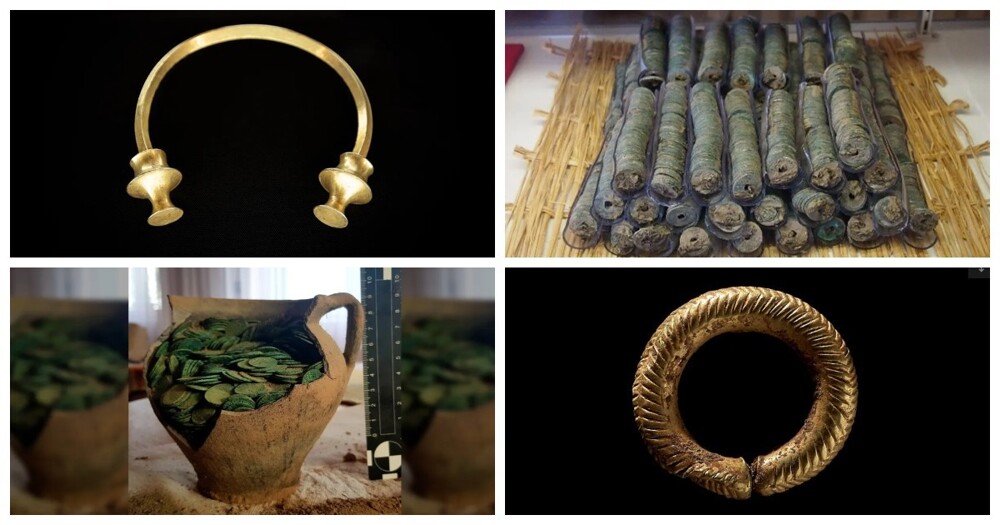
1. Large collection of coins in Japan 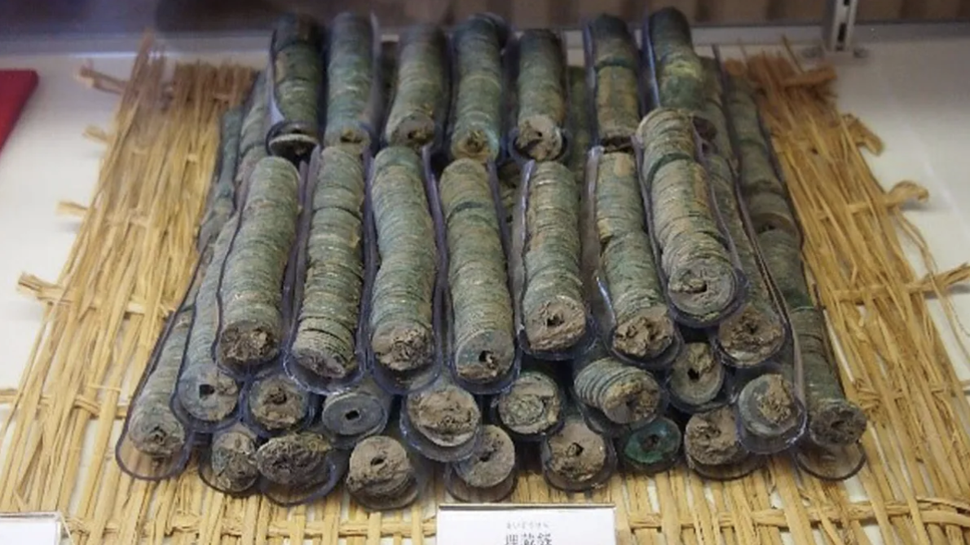
While constructing a factory north of Tokyo, workers discovered a cache containing approximately 100,000 coins in 1,060 stacks. The find dates back to between 175 BC and 1265 AD. The coins originated in China and bore the Chinese inscription “Banliang,” which translates to “half ounce.” Square holes in the center of the coins so that they can be strung on strings and stored in bundles.
2. Treasures from a sunken temple in Egypt 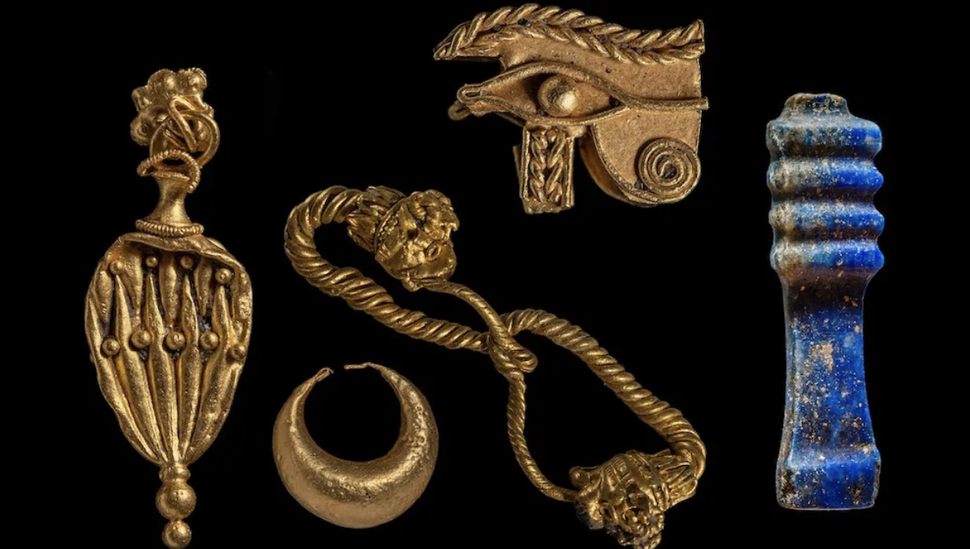
Underwater archaeologists exploring a canal off Egypt's Mediterranean coast have discovered a partially collapsed underwater temple. Further exploration of the temple, which collapsed in the mid-second century BC and was built for the ancient Egyptian god Amun, revealed many "treasures and secrets", including silver ritual instruments, gold jewelry and alabaster vessels.
3. Celtic gold coin "rainbow cup" in Bavaria 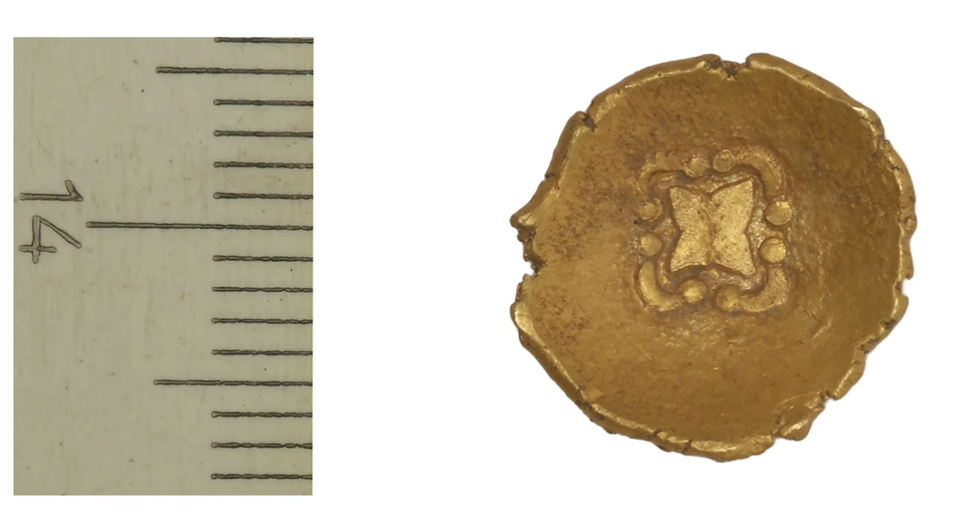
A rare Celtic Rainbow Cup coin, minted by the Celts 2,000 years ago, has been found near the Lech River in south-eastern Germany. The gold coin contains a rare design element: a four-pointed star surrounded by arches. The find is one of only three known coins containing this motif. According to legend, "rainbow goblets/bowls" are drops of gold falling to Earth from the end of the rainbow.
4. A treasure of American Civil War coins in a cornfield in Kentucky 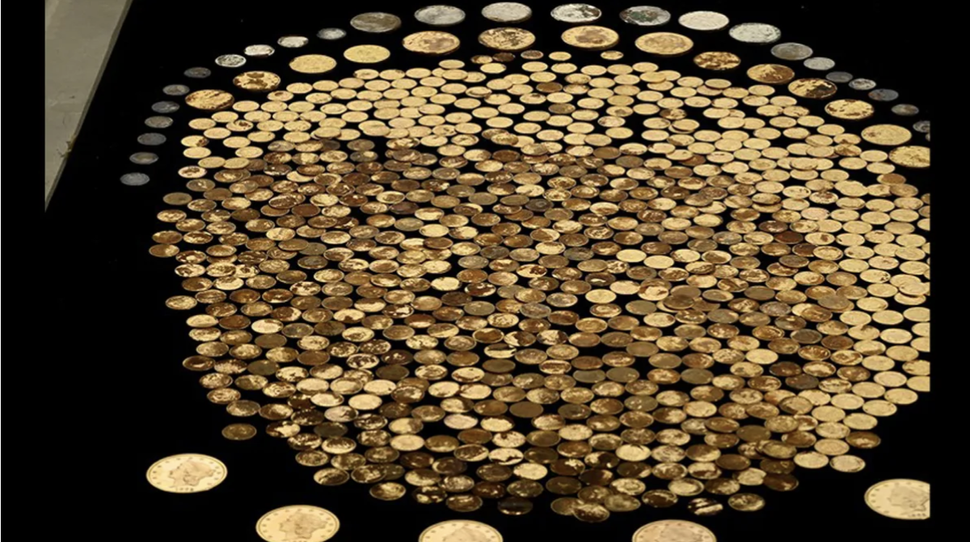
A treasure trove of 700 Civil War coins was discovered by a man working in his cornfield in Kentucky. Dubbed the Great Kentucky Hoard, the cache contained hundreds of gold coins minted between 1840 and 1863 (about 95% of the total) as well as several silver coins. Researchers believe the collection was buried before the Confederate raid in the summer of 1863.
5. An “eye-catching” gold hair ring from a Bronze Age burial in Wales. 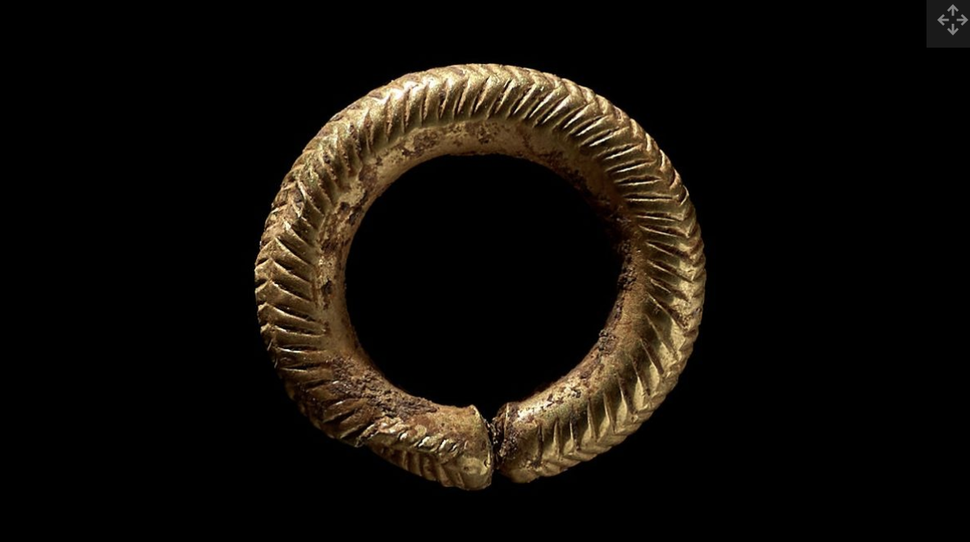
A glittering gold hair ring was part of a Bronze Age burial discovered on the side of a road in Wales. The small gold ring features an intricate design. During the excavation, archaeologists also found a wooden comb believed to be the oldest ever found in Britain. Both items were buried next to the cremated remains of a man of high social status dating back 3,000 years.
6. Bronze Age swords and thousands of medieval coins in Germany 
A group of volunteer conservationists discovered nearly 8,000 medieval coins and seven Bronze Age swords while working at three separate sites in Germany. Archaeologists believe the 3,000-year-old weapon may have been placed there as part of a sacrifice. The coins, which were divided between two places, turned out to be part of the largest Slavic coin hoard of the 11th century.
7. Iron Age glass workshop in the Czech Republic 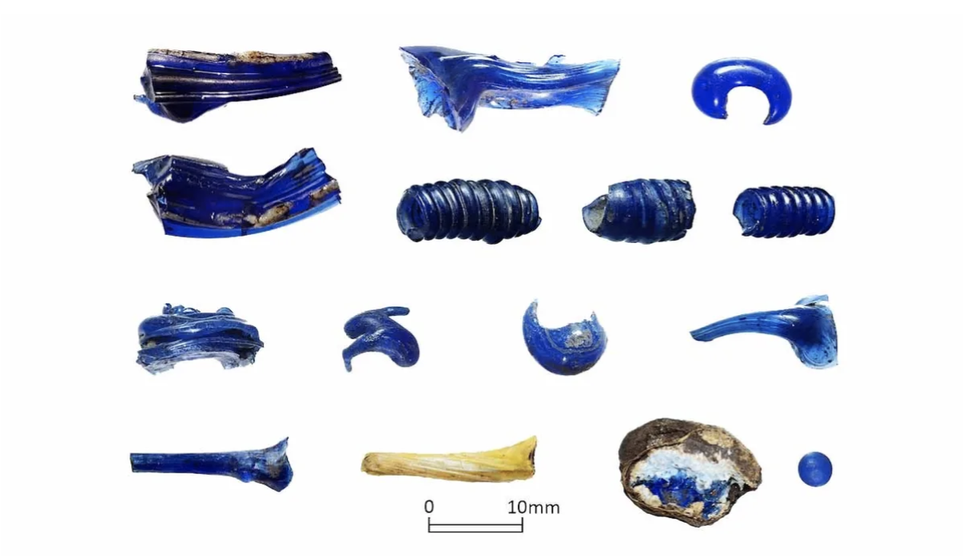
In the Czech Republic, archaeologists have discovered the oldest known glass workshop north of the Alps (in Němčice), and they believe it may have been used for ritual purposes. The 2,300-year-old workshop contained a variety of ready-made and finished glass and amber items, including beads and bracelets, as well as 2,000 Celtic-made gold and silver coins. They also discovered a square structure similar to other ancient structures across Europe that were used for rituals.
8. Gold necklaces in Spain 
A landslide in northern Spain led to the discovery of two gold necklaces that were buried around 2,500 years ago.t back. The first of the C-shaped necklaces, known as torcs, was discovered by a utility worker, and the second by a treasure hunter using a metal detector. Judging by the style and technique of the jewelry, archaeologists have concluded that the necklaces were made around 500 BC, during the Iron Age in Iberia, and were most likely worn by members of the upper class.
9. A cache of coins at an ancient Buddhist shrine in Pakistan 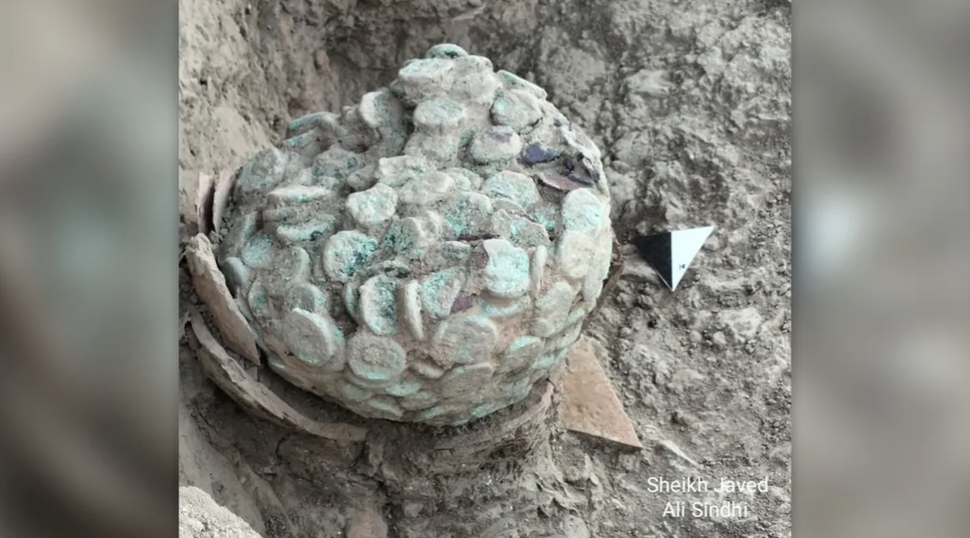
Archaeologists from Pakistan have discovered a collection of 2,000-year-old bronze coins among the ruins of an ancient Buddhist shrine known as a stupa. The coins and sanctuary are associated with the Kushan Empire, a predominantly Buddhist state that ruled the region from around the 2nd century BC. e. to the 3rd century AD e. As a result of corrosion, the coins merged into a single green lump weighing about 5.5 kilograms.
10. Clay jug with copper coins in Poland 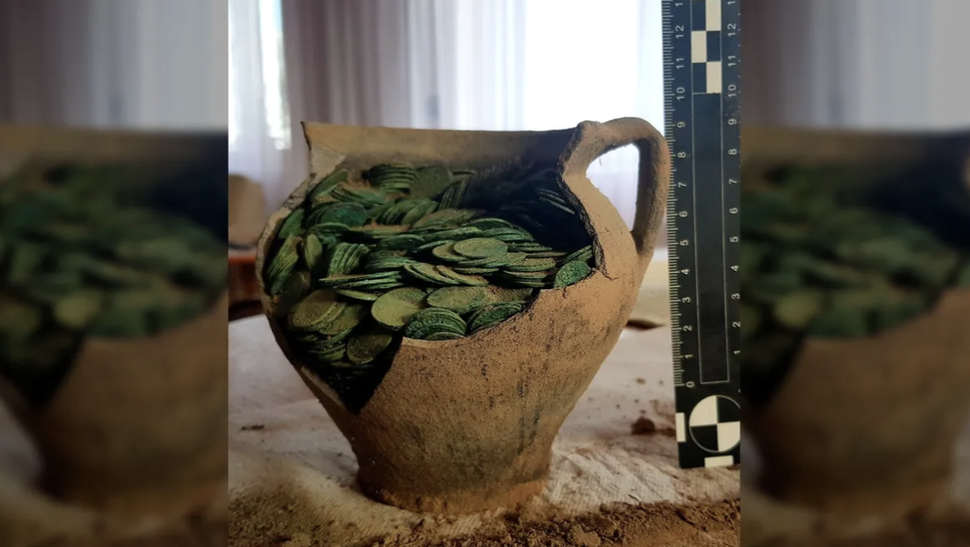
A farmer using a metal detector to search for tractor parts in a field in Poland was surprised when he discovered instead a cache of 1,000 copper coins buried under the topsoil. Further excavations revealed a broken clay "sivak" - a locally made jug with a single handle and a narrow neck - filled with coins minted in Warsaw in the 17th century. However, even at that time, these coins were not very valuable, and the entire treasure would then be enough to buy about two pairs of shoes, experts say.












